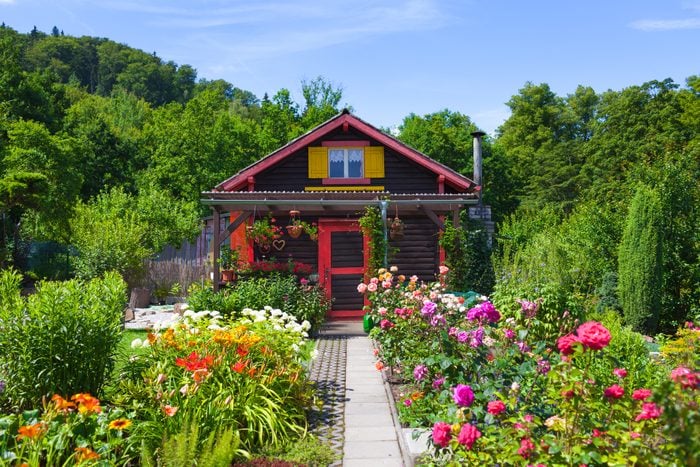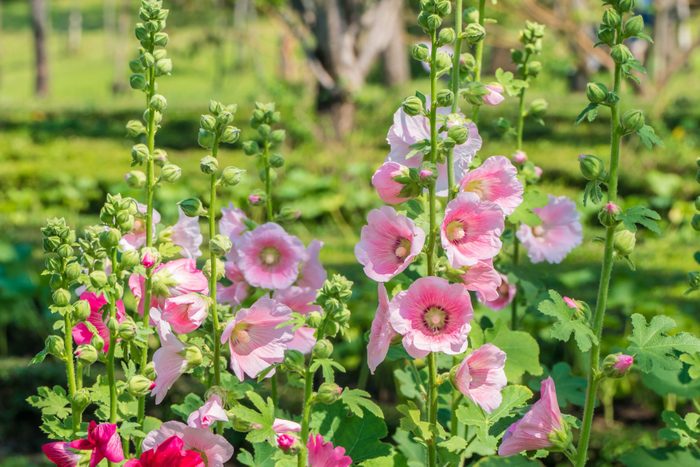
Hollyhocks
Hollyhocks, Alcea rosea, are great flowers to put in the back of any cottage garden. They often grow up to six feet tall and come in colors ranging from a soft peach to almost black.
Many hollyhocks can be grown as annuals in full sun with well-drained soil. You can sow seeds for mixes like Summer Carnival directly in the garden. If left to set seed, they will usually self-sow, giving you new hollyhocks each year.
Once established, hollyhocks can tolerate some periods of dryness. You may need to stake them in windy areas to keep them from falling over. Use green stakes and green ties that will blend in with the rest of the garden.
Editor’s Tip: A small plant budget can go a long way toward increasing your home’s attractiveness. So if you’re looking to enhance your surroundings to attract potential buyers, try these 5 ways that plant can help you sell your house.
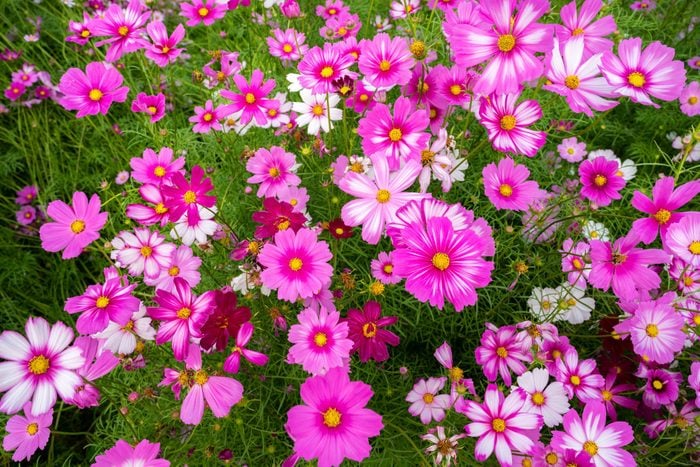
Cosmos
To extend the bloom season, plant cosmos. This annual is one of many fall-blooming flowers that help ensure a long-season of bloom in any garden.
Purchase a variety like Cosmic Mix for orange or Sonata Mix for all shades of pink. Sow seeds directly in the garden after your frost-free date. They like full sun and well-drained soil. Wait patiently as the fern-like foliage grows into a shrubby mound up to three feet tall before the flowers appear in late summer and early fall.
Some cosmos may self-sow and come up the following year, but they’re easy to remove if they appear where you don’t want them.
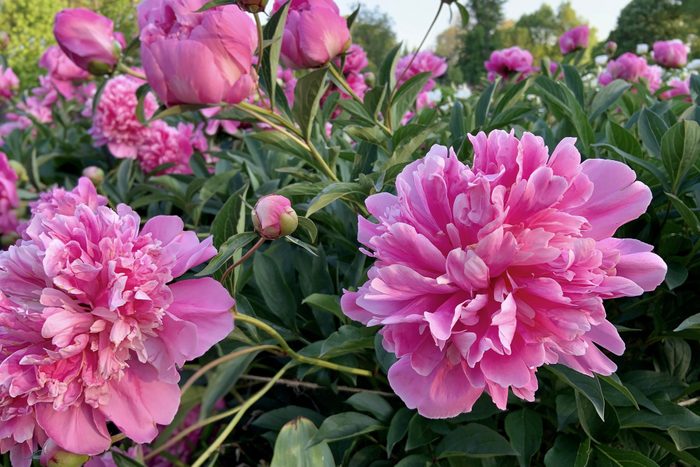
Peonies
Not every flower in a cottage garden is an annual. Peonies, perennials that grow in U.S. Department of Agriculture Hardiness Zones 2 through 8, do well in a cottage garden’s mixed border. The many types of peonies all bloom in spring, in shades ranging from white to almost red, plus yellow.
After peony flowers have faded, cut them off and leave the foliage to grow for the rest of the season before cutting it down to the ground in fall. The dark green foliage is a great background color to highlight other flowers blooming around it.
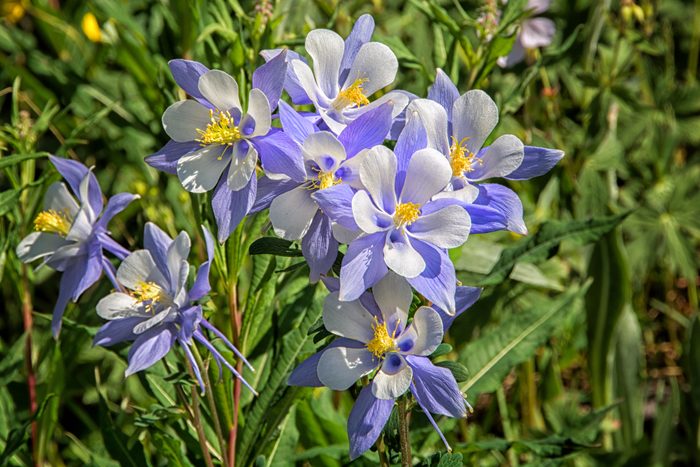
Columbine
Columbine, especially the old-fashioned type (Aquilegia vulgaris), sometimes known as Granny’s Bonnet, grows up to 18 inches tall.
Hardy in USDA Zones 3 through 9, it’s considered a short-lived perennial, but often self-sows if you let it go to seed. So you’re bound to have them come up every spring. The delicate-looking flowers on long stems are perfect for a cottage garden.
To get started, sow seeds indoors about eight weeks before your last frost date, or purchase plants for specific varieties. You can remove spent blooms before they set seed, or let them mature, set seed and self-sow. Like cosmos, the seedlings are easy to remove if found in unwanted places.
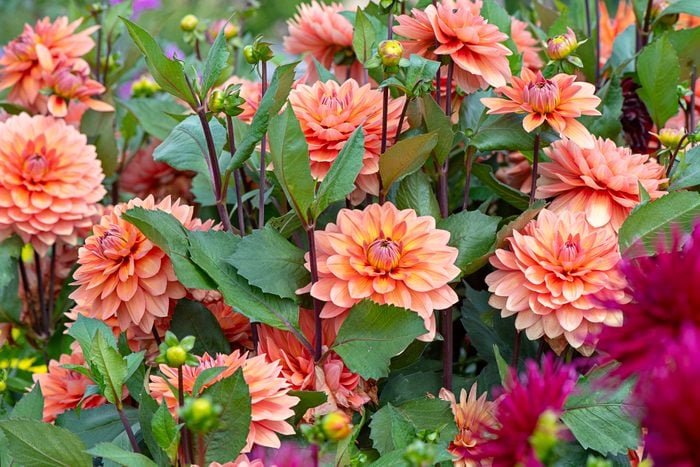
Dahlias
Dahlias add bursts of color to a cottage garden later in the season. Grown from tubers, they prefer full sun and well-drained soil. In Zones 8 through 10, you can leave the tubers in the ground all winter. In colder zones, dig them up to store over winter and replant in spring.
Many dahlias grow really tall so plan to stake them. If you don’t mind seeing the stakes, you can set them in place when you plant so they’re ready when needed.
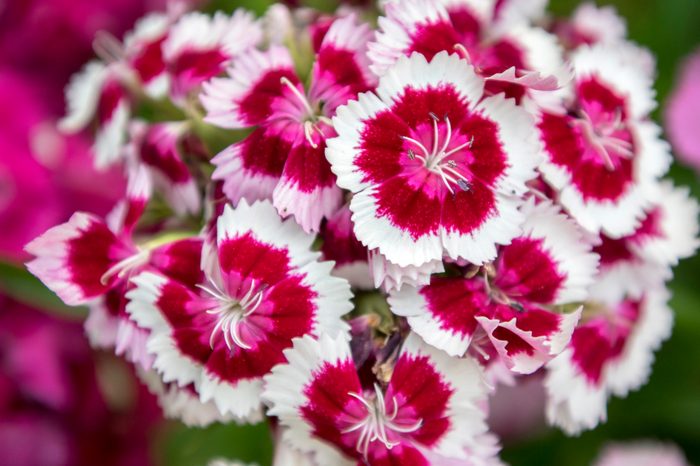
Pinks
Pinks, a common name for Dianthus, is the perfect perennial flower to put near the front of the cottage garden, or next to a path where it can spill over and soften the edges.
Many varieties, like ‘Bath’s Pink,‘ are hardy in Zones 3 through 8. They’ll bloom in the spring, then periodically through the summer with deadheading.
Pinks generally don’t mind dry soil, so they’re good next to rocks or drier areas. It’s also an easy plant to share with others or spread around your garden. Usually any piece with a tiny root will take hold and grow in a new location.
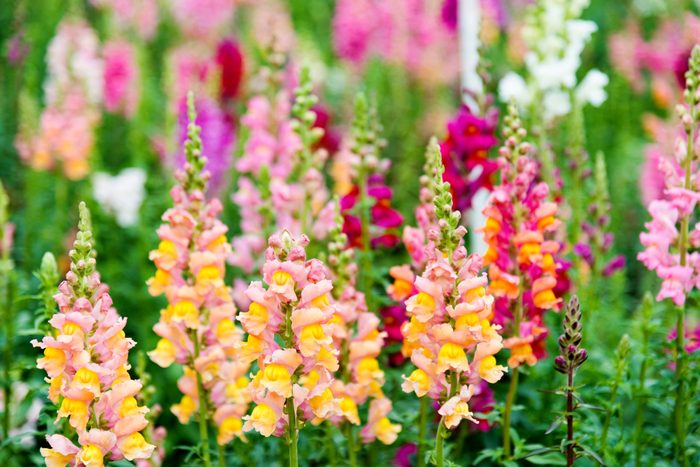
Snapdragons
Few of us can resist pinching off a flower from a snapdragon and making it “talk” to us, squeezing it so it opens and closes. These colorful annuals do well in a cottage garden, blooming best on cooler days in spring and then again in the fall.
While you can grow them from seed started indoors before your last frost, it’s just as easy to buy the plants. Some varieties like the Rocket Series can grow up to three feet tall in full sun with well-drained soil
If you keep deadheading them, snapdragons will keep blooming, slowing just a bit during the hottest days of summer.
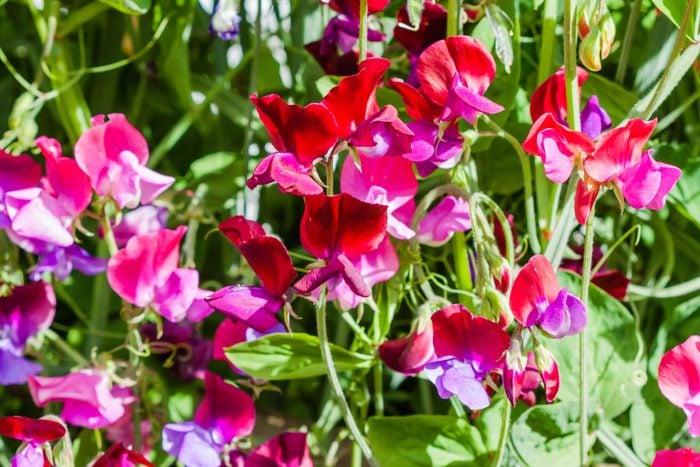
Sweet Peas
If your cottage garden has a fence, plant annual sweet peas, Lathyrus odoratus, each spring to grow up on it. These sweetly scented flowers do best when planted early, well before your last frost. Soak the seeds for a day or so before sowing to loosen up the thick seed coat.
If you don’t have a fence for them to climb, install a temporary support, then remove it once the vines stop flowering.
There’s also a perennial, Lathyrus latifolius, sometimes called everlasting sweet pea. Hardy in Zones 4 through 7, be sure you want it because it’s difficult to get rid of once it self sows. It also has no scent.
Warning: Both annual and perennial sweet peas are poisonous and should not be confused with peas we grow to eat.
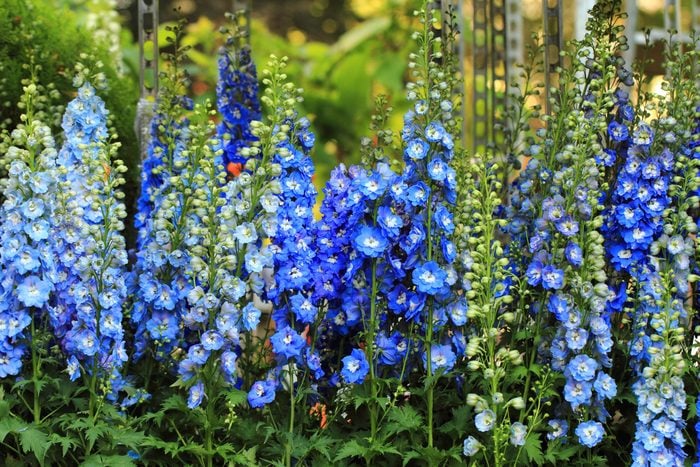
Delphiniums
If asked to choose a classic cottage garden flower, many gardeners would pick delphiniums. These perennials stand out, growing up to six feet tall in Zones 3 through 8. They’re also one of the few “true blue” flowers we can grow, also coming in shades of purple, pink and white.
They aren’t the easiest flowers to grow. If you like a challenge, try a mix like the Pacific Giant Series, starting with seeds sown 10 to 12 weeks before your last frost date. They like full sun and well-drained soil and should flower the second year after planting. You can also purchase plants like the New Millennium Purple Passion Delphinium in spring.
When they find a garden they like, delphiniums can be stunning.
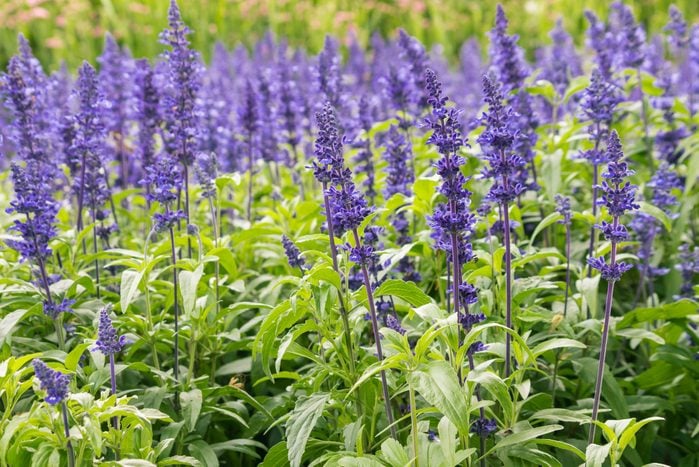
Salvias
Several varieties of perennial salvias will attract pollinators and hummingbirds. Most perennial salvias are hardy in Zones 4 through 9, blooming in mid to late spring. They grow best in full sun with well-drained soil.
After the initial flush of bloom, cut them back. Many newer varieties like ‘Blue By You‘ will rebloom through summer into fall. If you’re looking for something other than blue, try ‘Pretty in Pink,’ which also blooms through summer.
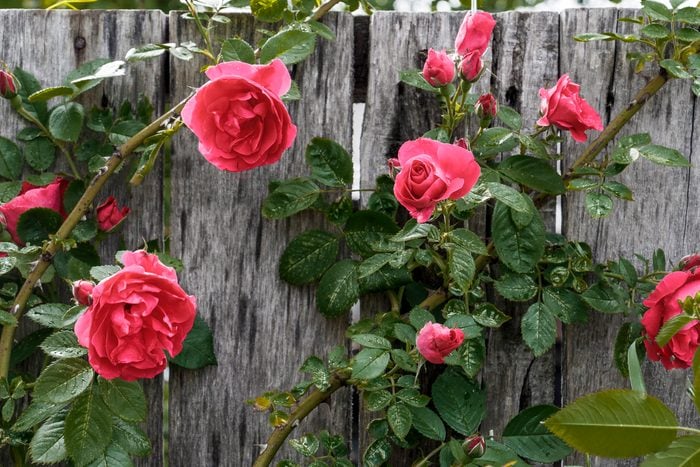
Climbing Roses
Climbing roses, which can ramble in and through a garden or up an arbor, can serve as a focal point in a cottage garden. And there are many varieties to choose from.
For an old-fashioned rose, try Zephirine Douhin, with dark pink flowers and canes that can grow up to eight to 10 feet. It’s hardy in Zones 5 through 9. If a big rose intimidates you or your garden isn’t that big, consider a smaller climbing rose like ‘Rise Up Amberness.‘ Hardy in USDA Zones 4 through 9, it has yellow blooms.
All roses do best in full sun with well-drained soil.
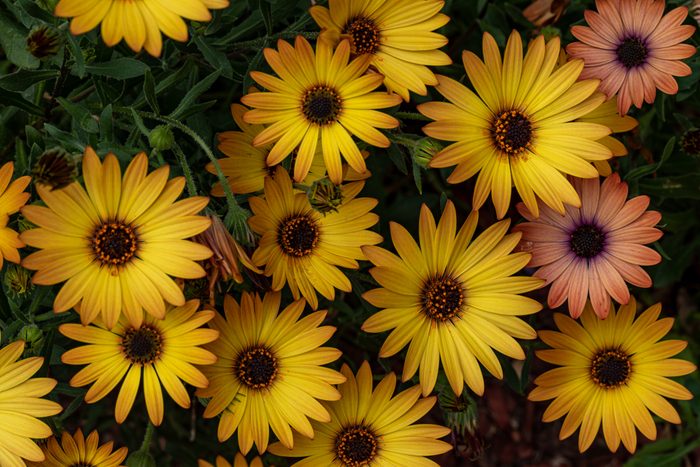
Daisies
Daisies, especially perennial daisies, have been growing in gardens for centuries. Shasta daisies in particular bloom in early to mid-summer. There are many varieties available so you can easily find one that’s the right size for your garden.
One of the most common varieties is ‘Becky.‘ It grows in Zones 5 through 9 in full sun and well-drained soil. If you cut off faded blooms, many varieties will continue to produce a few more flowers through the rest of summer. Plus, they make great cut flowers.

